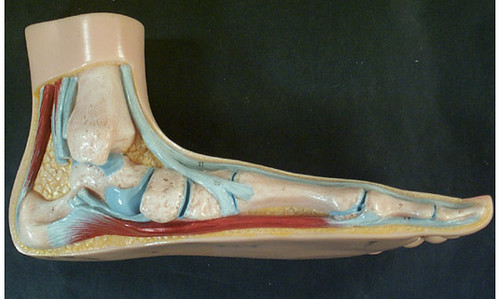Posterior Tibial Tendon Problems

Overview
The posterior tibial tendon is a crucial part of our legs, responsible for maintaining the arch of our feet and enabling us to stand, walk, and run. When this tendon gets inflamed or tears, it leads to a condition known as posterior tibial tendon dysfunction (PTTD). PTTD is often seen in adults over 40, and is more common in women than men. The condition can cause flatfoot, a deformity where the arch of the foot collapses.
Types
There aren’t different “types” of PTTD, but rather stages that describe the progression of the condition:
Stage 1: The tendon is inflamed but not stretched. Thus, the arch of the foot remains normal.
Stage 2: The tendon is elongated and the arch begins to flatten.
Stage 3: Aside from the tendon elongation and flatfoot, the joints of the foot become arthritic.
Stage 4: The arthritic condition progresses to the ankle joint.
Causes
The exact cause of PTTD is unknown, but certain factors may increase its risk:
– Age: People over 40 are more prone to this condition.
– Obesity: Extra weight puts more strain on the tendon.
– Hypertension and Diabetes: Both these conditions can affect foot health.
– Overuse: Activities such as running or climbing may also contribute to PTTD.
Symptoms
The first symptom of PTTD is often pain or swelling on the inner side of the foot and ankle. Other symptoms include:
- Gradual flattening of the arch of the foot.
– An outward shifting of the heel, making the ankle appear to turn in.
– Difficulty standing on tiptoe.
– Foot pain and swelling that worsens with activity.
Diagnosis
To diagnose PTTD, the doctor will first review your medical history and perform a physical examination. Along with that, imaging tests like:
– X-ray: To examine the foot’s bone structures.
– MRI or Ultrasound: To evaluate the condition of the tendon.
– CT Scan: To assess the severity of the foot deformity.
Treatment Options
The treatment approach can be divided into non-surgical and surgical methods.
Non-surgical treatments include:
– Immobilization: The use of a cast or brace to restrict foot movement and allow the tendon to heal.
– Physical therapy: Exercises to strengthen the tendon.
– Orthotic devices: Custom shoe inserts to correct the foot’s position.
– Medication: Mostly non-steroidal anti-inflammatory drugs (NSAIDs) to reduce pain and inflammation.
If non-surgical treatments fail to bring relief, surgical intervention may be necessary. Surgery may involve cleaning the tendon, repairing the tendon, or reconstructing the arch of the foot.
Living with Posterior Tibial Tendon Problems
Living with PTTD can be challenging but with the right approach, you can manage your symptoms effectively:
– Wear supportive shoes.
– Maintain a healthy weight.
– Keep blood pressure and sugar levels under control.
– Regularly practice exercises recommended by a physiotherapist.
When to Seek Help
You should seek immediate medical attention if:
– The pain persists or intensifies, even with rest and over-the-counter pain medication.
– Swelling doesn’t decrease after a few days.
– You are unable to walk or bear weight on your foot.
– You experience a sudden loss of function in your foot.
Having a comprehensive understanding of the condition, its symptoms, causes, treatments, and when to seek medical help empowers you to better manage your condition and work closely with your medical provider for best results.
